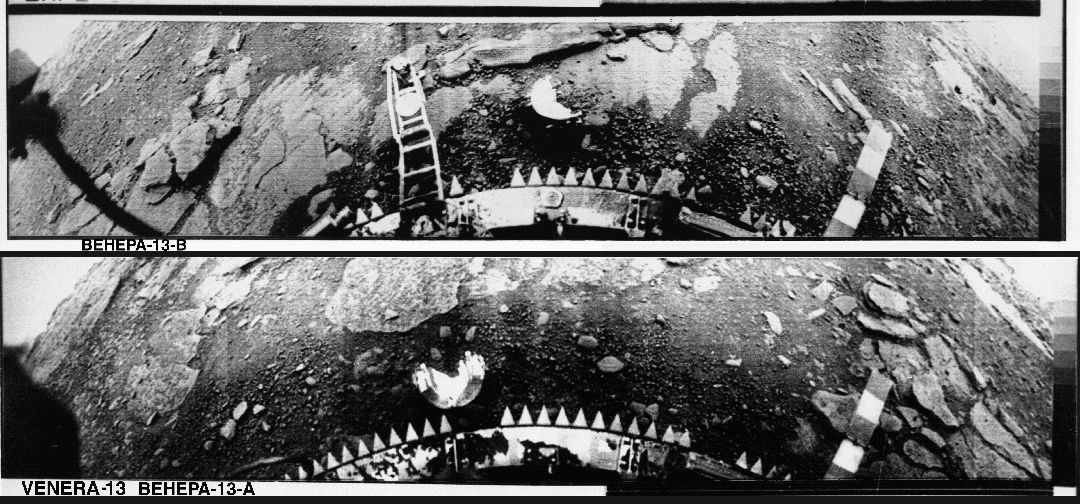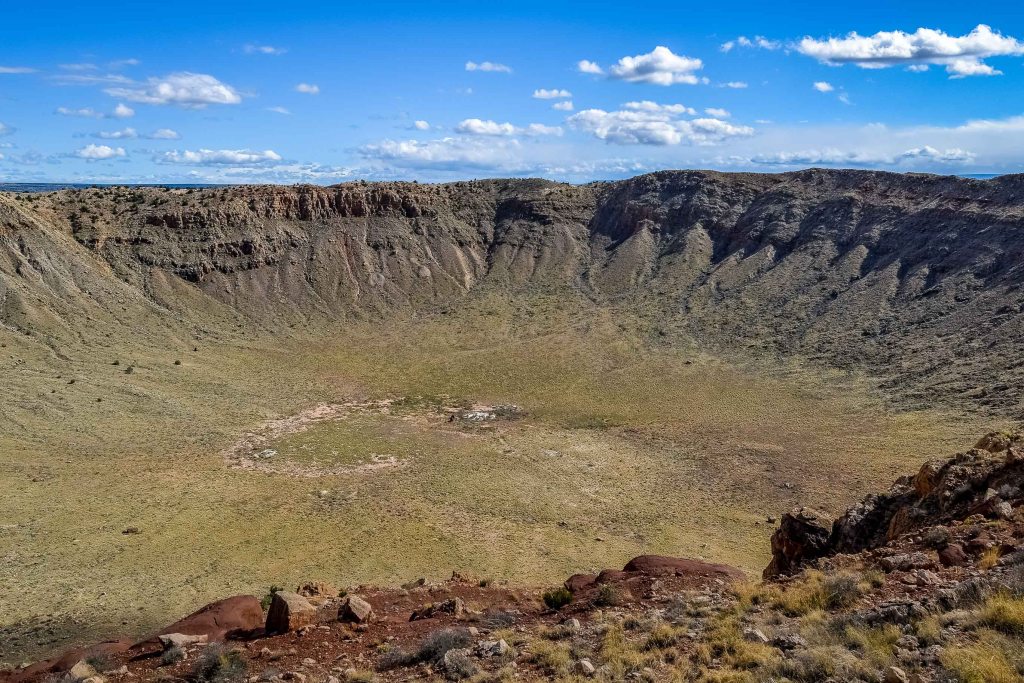A second rock orbits our star at a distance of about 108 million km away, and it’s named after the Greek Goddess of love and beauty – Venus. (Venus is the Roman name for the Greek Goddess Aphrodite).
It slowly spins from east to west, which is the opposite direction compared to most planets.
Even though it is only second-closest to the Sun, Venus is the hottest planet in our Solar System. It has a thick atmosphere which traps heat, creating a runaway greenhouse effect and has surface temperatures that are high enough to melt lead. The view below the clouds reveals volcanoes and deformed mountains. Venus has an extremely high amount of air pressure on its surface, which is 90 times more than on Earth, just like the pressure you would encounter deep in the oceans.

Picture Credit: NASA/JPL

Picture credit – NASA/JPL
In March 1982, the Russian spacecraft-Venera 13 landed on Venus in a region called Beta Regio, surrounded by a barren region of flat volcanic rocks. It captured 14 images of the area before succumbing to the atmospheric pressure, lasting for just 2 hours and 7 minutes.

Picture Credit – NASA & Union of Soviet Socialist Republics
Many scientists think that water used to exist on the surface. Future NASA missions plan to search for the remains of an ancient ocean. However, the acidic clouds and extreme temperatures of Venus make it less possible for life as we know it to exist.
Just like Mercury, Venus too doesn’t have a moon, most probably because of the Sun’s stronger gravitational force.
The third planet from the Sun, fifth largest in size and named in German, lies our home planet – Earth, meaning – “the ground”.
Earth orbits the Sun at about 150 million kilometers away, which is exactly one Astronomical Unit (AU) in length. It takes light about 8 minutes to reach the Earth from the Sun. The Earth is a wonderfully unique planet in several ways.
- Firstly, it is the only planet that we know that has stable liquid water on its surface, out of the thousands of planets that we have found. It is at exactly the right distance from the Sun, just so that all the water isn’t frozen to ice or vaporized in the atmosphere.
- Secondly, it is the only planet (as of today) that harbours life as we know it. (I will be glad to correct that line when the time comes.) There’s a highly wide variety of species of plants and animals on Earth, many of which we haven’t discovered yet.
- The Earth’s atmosphere contains about 78% nitrogen, 21% oxygen, 0.9% argon and 0.1% other gases. This atmospheric composition makes the planet hospitable for life to thrive.
The atmosphere also protects us from meteoroids, of which most burn up before they can crash onto the surface.

Picture Credit – By Grahampurse – Own work, CC BY-SA 4.0, https://commons.wikimedia.org/w/index.php?curid=55504355
Unlike the Earth however, our Moon doesn’t have an atmosphere, which is what makes it a cratered world due to the impact of asteroids. This rocky Moon is the only place humans have set foot on, outside the Earth. It is the fifth largest moon out of more than 190 that orbit different planets in our solar system.
The moon is tidally locked to the Earth, meaning that we always see the same side from Earth. This happens because the moon takes exactly the same time for one orbit around the earth and one rotation on its axis.

So far, 24 people have travelled to the Moon and 12 have visited its surface. NASA is now preparing to set up the first permanent presence on the moon. The Artemis program will enable the first woman and next man to walk on the lunar surface by 2024, fifty years after the last moon landing in December 1972. This will further help in the development of future human missions to Mars.
I now conclude this post, and I hope you had a fun time exploring Venus and her sister Earth along with the Moon, and I shall be back next week with some more interesting stuff!
Thank you for reading!!
Links you might be interested in –

Very informative and succinctly expressed!
LikeLiked by 2 people
Thank you so much!
LikeLike
Really fun and informative post!
LikeLiked by 2 people
Thanks a lot!!!
LikeLiked by 1 person
Interesting,Parvathi! well done!
LikeLiked by 1 person
Thank you very much!
LikeLike
Wow!
LikeLiked by 1 person
😁I have the same reaction to almost every single space thing i see
LikeLike